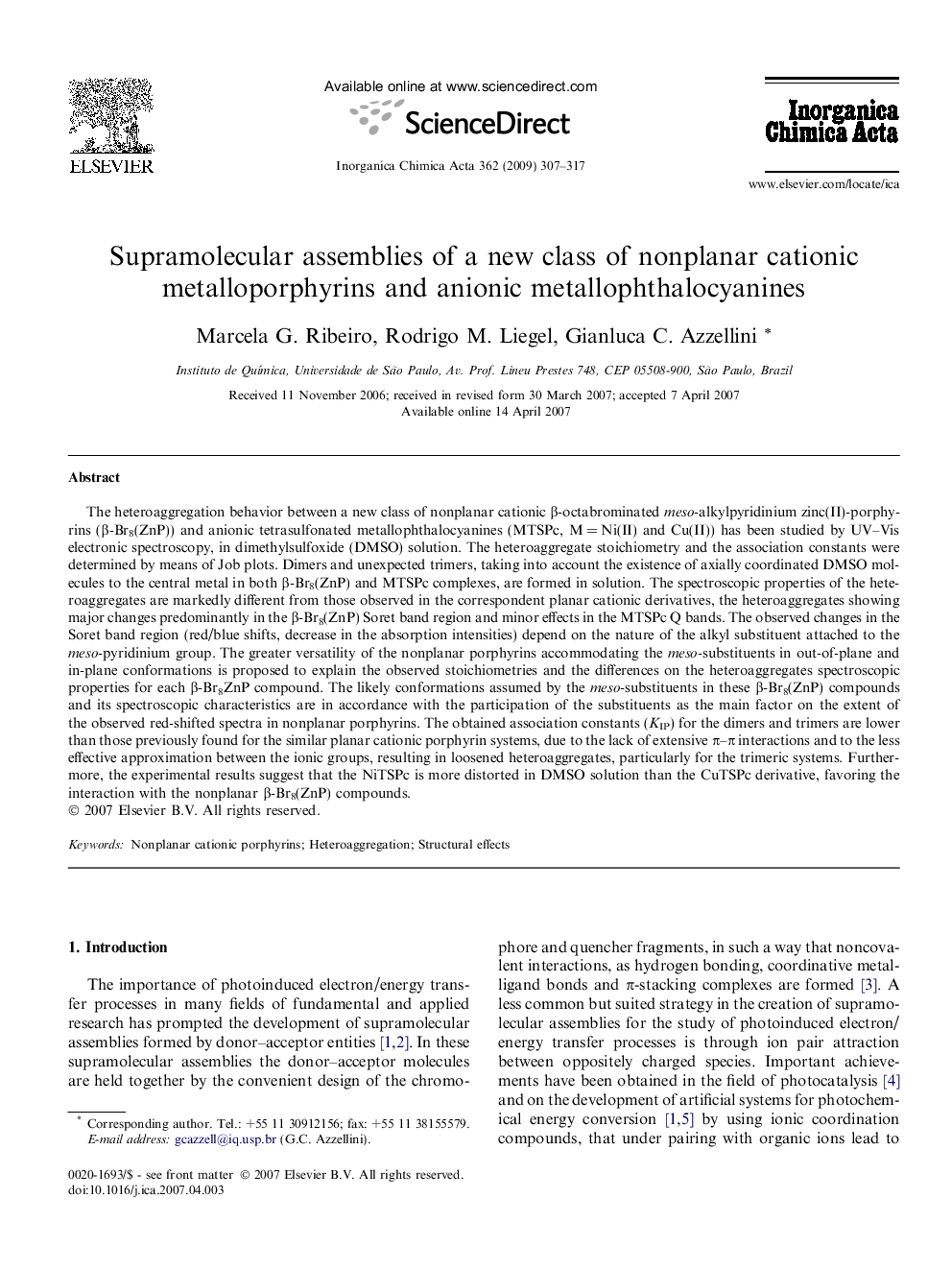| Article ID | Journal | Published Year | Pages | File Type |
|---|---|---|---|---|
| 1307132 | Inorganica Chimica Acta | 2009 | 11 Pages |
The heteroaggregation behavior between a new class of nonplanar cationic β-octabrominated meso-alkylpyridinium zinc(II)-porphyrins (β-Br8(ZnP)) and anionic tetrasulfonated metallophthalocyanines (MTSPc, M = Ni(II) and Cu(II)) has been studied by UV–Vis electronic spectroscopy, in dimethylsulfoxide (DMSO) solution. The heteroaggregate stoichiometry and the association constants were determined by means of Job plots. Dimers and unexpected trimers, taking into account the existence of axially coordinated DMSO molecules to the central metal in both β-Br8(ZnP) and MTSPc complexes, are formed in solution. The spectroscopic properties of the heteroaggregates are markedly different from those observed in the correspondent planar cationic derivatives, the heteroaggregates showing major changes predominantly in the β-Br8(ZnP) Soret band region and minor effects in the MTSPc Q bands. The observed changes in the Soret band region (red/blue shifts, decrease in the absorption intensities) depend on the nature of the alkyl substituent attached to the meso-pyridinium group. The greater versatility of the nonplanar porphyrins accommodating the meso-substituents in out-of-plane and in-plane conformations is proposed to explain the observed stoichiometries and the differences on the heteroaggregates spectroscopic properties for each β-Br8ZnP compound. The likely conformations assumed by the meso-substituents in these β-Br8(ZnP) compounds and its spectroscopic characteristics are in accordance with the participation of the substituents as the main factor on the extent of the observed red-shifted spectra in nonplanar porphyrins. The obtained association constants (KIP) for the dimers and trimers are lower than those previously found for the similar planar cationic porphyrin systems, due to the lack of extensive π–π interactions and to the less effective approximation between the ionic groups, resulting in loosened heteroaggregates, particularly for the trimeric systems. Furthermore, the experimental results suggest that the NiTSPc is more distorted in DMSO solution than the CuTSPc derivative, favoring the interaction with the nonplanar β-Br8(ZnP) compounds.
Graphical abstractCationic nonplanar Zn(II) porphyrins and anionic metallophthalocyanines self-assemble in DMSO solution. The stoichiometries, spectroscopic properties and association constants of these heteroaggregates (dimers/trimers) differ markedly from the observed for the correspondent cationic planar porphyrin derivatives. The great versatility of the nonplanar porphyrins accommodating the meso-susbtituents in out-of-plane and in-plane conformations is proposed to explain the new properties displayed for these heteroaggregates.Figure optionsDownload full-size imageDownload as PowerPoint slide
